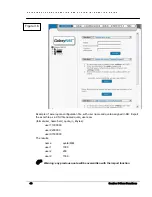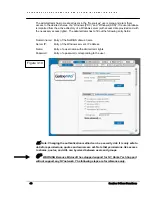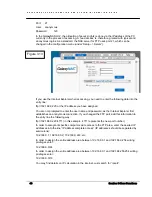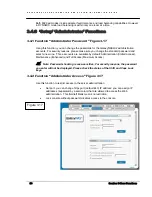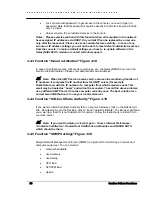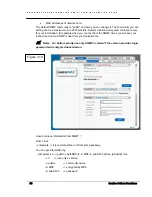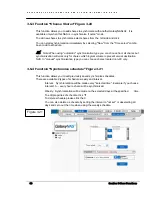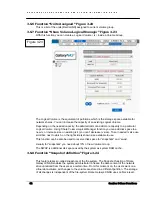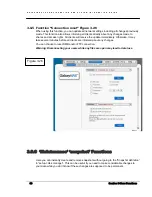
G A L A X Y N A S L X C O N F I G U R A T I O N A N D S Y S T E M I N T E G R A T I O N G U I D E
53
Section 3 Menu Functions
•
Switch Fault Tolerance (SFT) Uses two (total) adapters connected to two switches to
provide network availability of a second switch and adapter if the first adapter, its
cabling, or switch fail. Do not put clients on the link partner switches, as they will not
pass to the partner switch at fail. Spanning Tree (STP) must be On.
"
Note: SFT uses only one team. Only 802.3ad DYNAMIC mode allows failover
between teams.
•
Adaptive Load Balancing (ALB) Offers increased network bandwidth by allowing
transmission over 2÷8 ports to multiple destination addresses, and also incorporates
Adapter Fault Tolerance. Only the primary receives incoming traffic. Only the primary
transmits broadcasts/multicasts and none routed protocols. The ANS software load
balances transmissions, based on Destination Address, and can be used with any
switch. Simultaneous transmission only occurs at multiple addresses. This mode can
be connected to any switch.
•
Receive Load Balancing (RLB) Offers increased network bandwidth by allowing
reception over 2÷8 ports from multiple addresses. Can only be used in conjunction
with ALB. Only the adapters connected at the fastest speed will be used to load
balance incoming TCP/IP traffic. The primary, regardless of speed, will receive all
other RX traffic. Can be used with any switch. Any failover will increase network
latency until ARPs are re-sent. Simultaneous reception only occurs from multiple
clients. On NetWare servers, If using NetWare Load Balancing, you can use ALB but
not RLB.
•
SLA option - Intel Link Aggregation (LA), Cisco* Fast EtherChannel™ (FEC) and Gig
EtherChannel™ (GEC) Supports Fast EtherChannel standard. All adapters in the
team can transmit and receive. All adapters appear to share a single MAC and L3
address. The load is balanced based on Source/Destination Address Pairs and
simultaneous transmission only occurs to multiple addresses. Reception load
balancing is determined by the switch. Capable of aggregating 2÷8 ports (based on
switch capabilities). Please see Cisco standards for FEC/GEC. Must be used with
Cisco FEC/GEC capable switches or Intel switches capable of Link Aggregation or
switches capable of 802.3ad.
"
Note: For EC/LA and 802.3ad modes be sure to check your switch's actual
capabilities and requirements.
•
IEEE 802.3ad This standard has been implemented in two ways:
Static mode (the majority of switches on the market) is equivalent to Ether
Channel/Intel's Link Aggregation and adapter teams should be set up in
FEC/LA/3ad mode. Must be used with an 802.3ad, FEC/GEC/ or Intel Link
Aggregation capable switch. (For additional information see Fast Ether
Channel above.) This is the 802.3ad available in 8.x software.
DYNAMIC mode requires 802.3ad DYNAMIC capable switches (limited
availability). Active aggregators in software determine team membership
between the switch and the ANS software (or between switches). This is
available only in some versions of Intel(R) ANS software. There is a maximum
of 2 aggregators per server and you must choose either maximum bandwidth
or maximum adapters.


